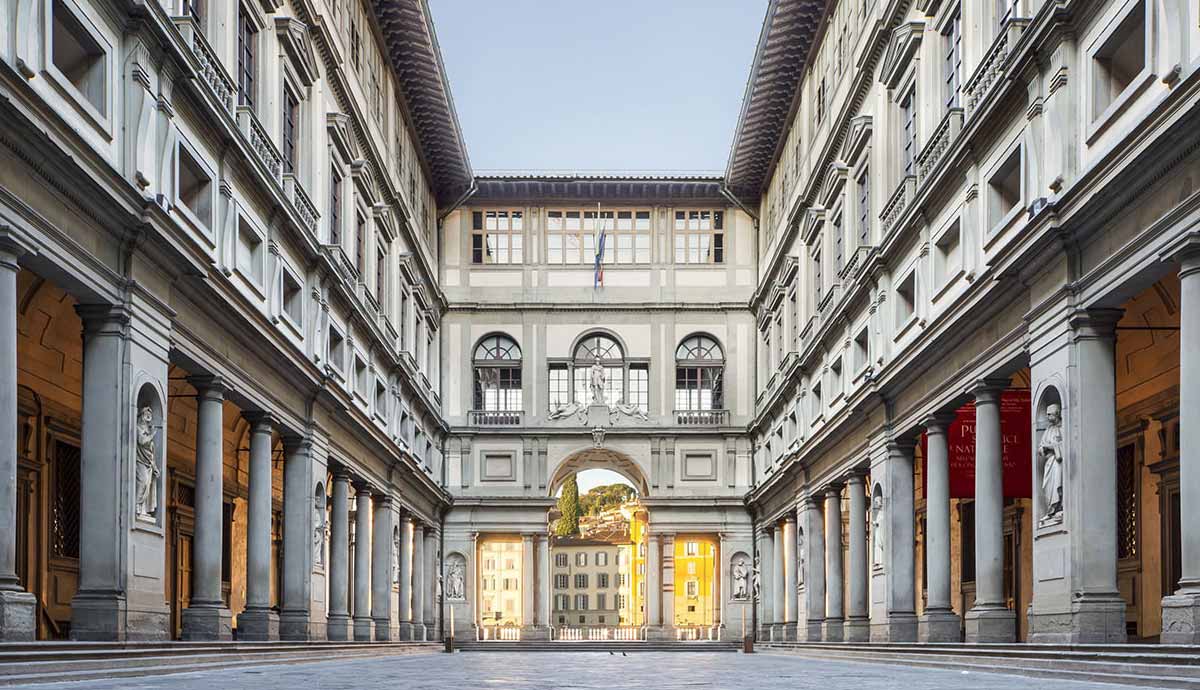
Once owned by the wealthy and influential Medici family, the Uffizi Gallery in Florence is one of the world’s most famed art galleries today, housing masterpieces by a series of Renaissance and Baroque era artists. They are also one of Italy’s most popular attractions, drawing in around four million tourists from around the world every year. With more than 100 rooms, and around 2,200 artworks on display, one could easily spend an entire day perusing their vast museum collection. However, we’ve rounded up a handy guide featuring five of the top highlights in the Uffizi Gallery to make a beeline for, by Sandro Botticelli, Raphael, Artemisia Gentileschi, Caravaggio, and Michelangelo, in case you’re planning a shorter visit.
1. The Birth of Venus, by Sandro Botticelli, 1480

This breath-taking masterpiece by Sandro Botticelli is considered a star attraction in the Uffizi. Rich in allegorical meaning, it tells the story of Venus being born from the sea, taken from Ovid’s Metamorphoses. Botticelli paints Venus naked, perched on a seashell, while celestial forces blow her towards the seashore. On the right, a handmaid lifts a shawl to cover the great beauty’s modesty as she enters the world for the first time. His portrayal of the ancient story is adorned with intricate details, including flickering fabric and glistening blue seawater, transporting us to a magical, otherworldly place.
2. Madonna of the Goldfinch, by Raphael, 1505-6

One of art history’s most revered icons, Raphael has produced some of the most significant and influential works in the entire history of art. His Madonna of the Goldfinch is no exception, with its sparking colors, sfumato lighting and stunning attention to detail and story. He has carefully arranged the three central figures into a balanced pyramid design, emphasizing the mathematical order that epitomizes the art of the Renaissance era. The painting also demonstrates Raphael’s master in depicting human expression, with gentle, loving expressions on the faces of the figures.
3. Judith and Holofernes, by Artemisia Gentileschi, 1620

The most famous woman painter of the Renaissance, Gentileschi earned a widespread reputation as a painter of note during her lifetime, at a time when women were rarely taken seriously. She often portrayed stories of women’s suffering or revenge, with paintings of heroines, female warriors and women’s suicides, highlighting the own struggles she had faced in her own life. Here she retells the Biblical story of Judith and Holofernes, zeroing in on the terrifying and gruesome pinnacle of the action, the moment when Judith decapitates her Assyrian enemy after tricking her way into his private chamber. She brings the terrible tale to life with stark, chiaroscuro lighting and dramatic tenebrism, drenching the painting’s backdrop in velvet black to emphasize the pain and terror between the central characters.
4. Bacchus, by Caravaggio, 1598

Italian Baroque painter Caravaggio is world-renowned for his theatrical storytelling abilities, and this portrayal of Bacchus, the god of wine is a standout from his long and illustrious career. Commissioned by his patron Cardinal del Monte as a present for the Grand Duke of Tuscany Ferdinand I, Caravaggio painted this seductive, indulgent scene as a showpiece to demonstrate his exceptional skills. He paints Bacchus with close, careful attention to detail, embellishing the lighting effects of his skin against a muted brown backdrop. Around his Bacchus, Caravaggio includes carefully rendered surfaces, from the crumpled folds of fabric to the smooth hard surface of fruit, and the glossy sheen of glass holding rich, dark wine inside it.
5. Doni Tondo, by Michelangelo, 1507

This tondo, or round painting, was made by the revered polymath Michelangelo, illustrating the Holy Family surrounded by classical nudes, all contained within a single, crowded scene. As one of Michelangelo’s few paintings, given his strong preference for sculpture, is a particularly rare example in the Uffizi Gallery, and well worth a visit to see the artist’s sculptural handling of paint which informed his three-dimensional work.










